Fittonia Plant - Care, Propagation and Types of Mosaic Plant
Fittonia is a plant many associate with exotic specimens. The plant is quite delicate and requires special treatment – most importantly, regular watering. Are you wondering how to make the nerve plant look beautiful for a long time? Learn the tips and tricks shared by experts and take care of your fittonia.
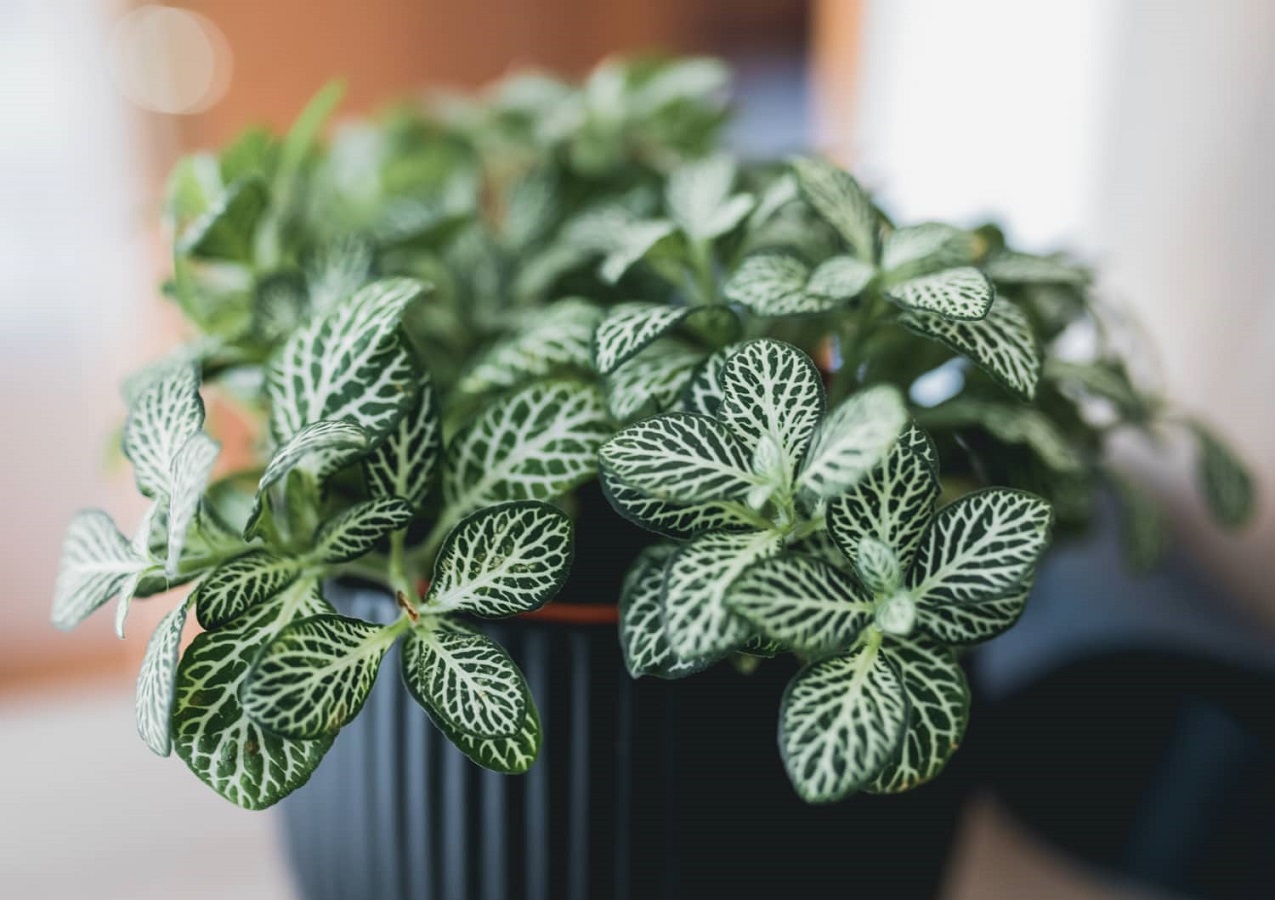
Fittonia – what kind of plant is it?
Fittonia is a perennial originating in South America, where it grows in natural conditions. It’s not a tall plant. Usually, it reaches no more than 20-30 centimeters. Although the exotic-looking leaves of a nerve plant are its most distinct decoration, the plant also blooms. Interestingly enough, flowers typically appear between December and February. Thanks to a good care, blooming might reoccur in summer as well. It’s not a rule, though.

Fittonia – varieties
Fittonia, or mosaic plant has several known varieties. The one with white nerves, Fittonia albivenis is the most popular type. Apart from this one, there are other types of fittonia. They have different color leaves, such as:
- red,
- pink,
- yellow-green.
Each of the mentioned mosaic plant varieties look quite interesting, as they display clearly visible white nerves (hence the English name “nerve plant”). The most popular types include:
- Fitonia Red Angel
- Fitonia Snow Angel
- Fitonia Anne White
- Fitonia Mosaic Pink Diamond
- Fitonia Mosaic Skeleton
There are also two completely different variations. The first one is called fittonia Juanita. The plant has pink-and-green leaves with a cream-pink nerve system. The other type, Argyroneura, has green leaves and white nerves, and looks quite fascinating.
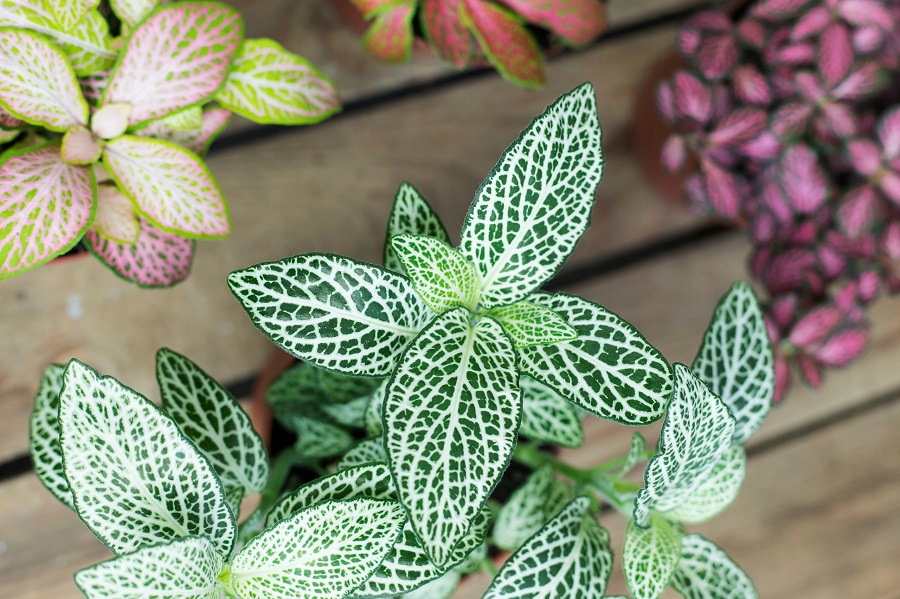
Fittonia plant care – where to place a nerve plant?
Fittonia is one of the plants that love half-shaded or soft-shaded spots. It cannot be exposed to direct sunlight. What’s more, it likes warmth – so room temperature ranging at 18-20°C (64.4-68°F) is ideal for it.
The best soil for a nerve plant
The best soil for a fittonia is fertile and permeable. The pH level is important as well – it should be acidic between 5.5 and 6.5. Pay attention to the moisture level as well, moderate levels are ideal. Fittonia doesn’t like dry soil and reacts to it quickly. It cannot be overwatered, neither. Water your mosaic plant every 5-6 days and mist its leaves as needed.
Don’t use tap water to water fittonias. Filtered or distilled water is a better idea – you can buy it in any supermarket.
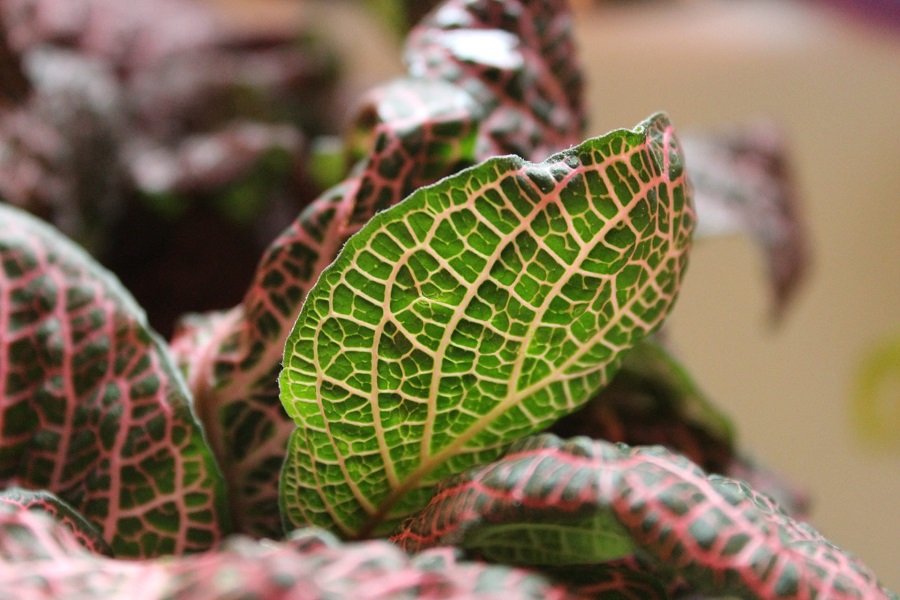
Are fittonias hardy plants?
Fittonias are quite delicate plants. Their instant reaction to the lack of water is drooping – the leaves dry out and fall off. Nerve plants also like warmth. It means they require moderately high temperatures to grow. Fittonia is not frost-resistant, either.
Interestingly enough, fittonias are quite resistant to pests and diseases. While they might obviously occur, there’s no risk the plant will get seriously sick and dry or wilt.
Fittonia propagation – is it difficult?
Propagating fittonias is an extremely easy task and anyone can do it. Just cut off the top shoots – they will make perfect seedlings. Dip them in a special rooting product and then put in soil mixed with peat.
Do fittonias need fertilizer?
Fittonia is a plant that requires regular fertilizing. Liquid products are best in this case. They can be used during the vegetation period every 2 weeks, and once per month during the dormancy period.
Fittonias benefit best from fertilizers designed for leafy or ornamental plants. Make sure the product doesn’t contain large doses of nitrogen.
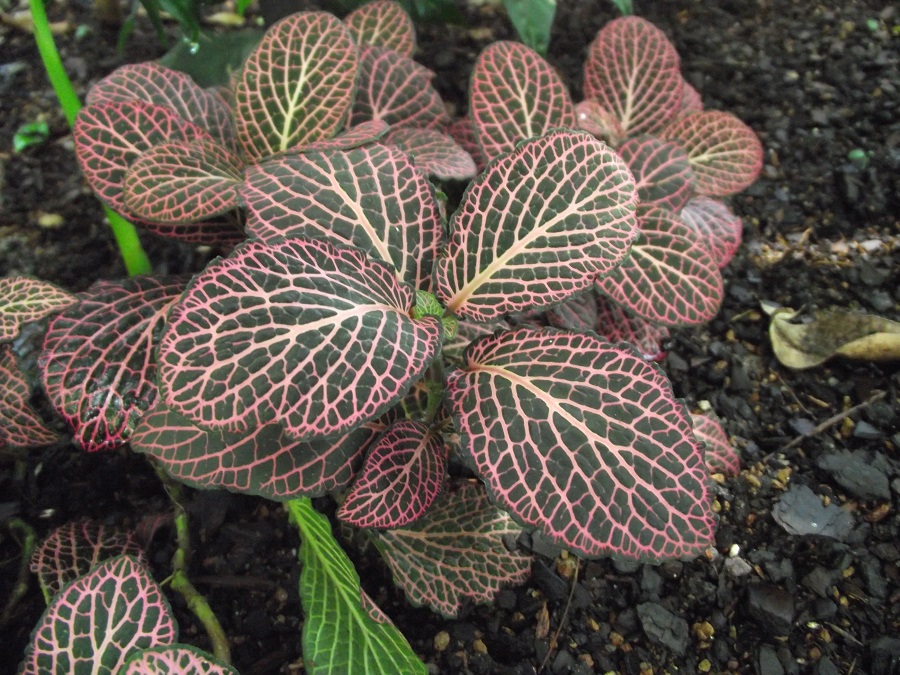
How to transplant a fittonia?
Fittonia grows very fast at its initial stages. Because of this, it might need repotting – sometimes even once a year. It’s important, because as the plant grows, so does its root system. A lack of sufficient space for growth might hinder the plant’s development.
The biggest problems of fittonias
Fittonia is a quite demanding plant, so you might encounter some issues when cultivating it. Drying leaves are the most common problem. Are you wondering why it might happen? There are a few possibilities:
- too much sunlight
- dry air,
- not misting the leaves.
You might also notice drooping of the fittonia leaves without any signs of drying. What to do, in this case? The usual reason behind this is a low temperature of the surroundings.
What are the common pests attacking fittonias?
Fittonias are typically attacked by aphids and spider mites. They might spread onto them from other plants. You can prevent this by using natural sprays. If the insects have already spread in big numbers, chemical products are the best option. They work fast, and this way you prevent the plant’s damage.
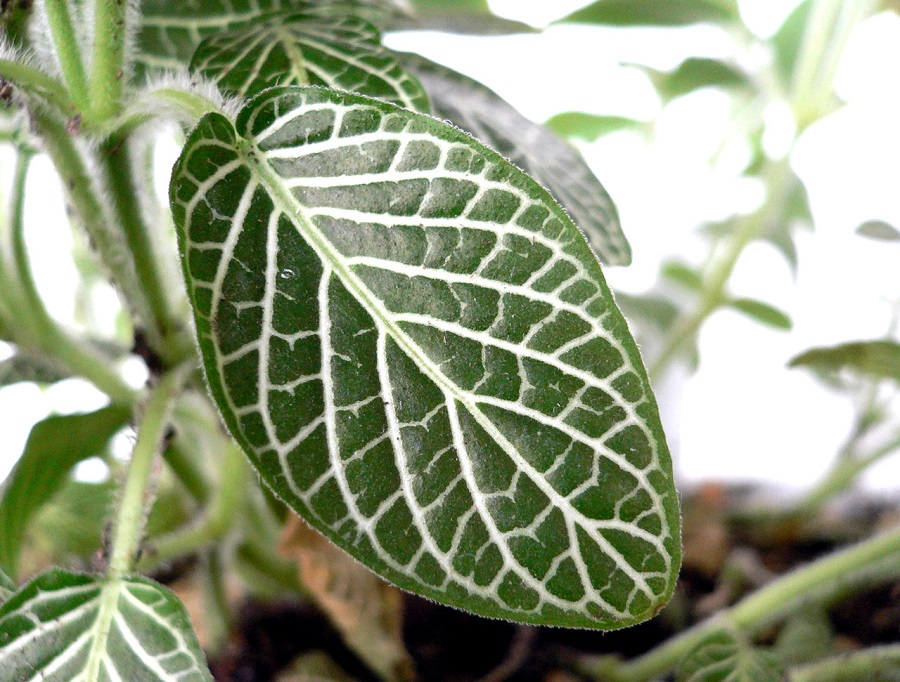
📍 How to take care of a fittonia?
Fittonia is a delicate plant, and for this reason it needs special care. Make sure it grows in the right place, remember about watering it and plant it in the right soil. Fittonias need to be repotted every year and fertilized regularly with special products.
📍 Nerve plant propagation – how to do it?
Fittonias can be propagated using their top stems. Cut them off, dip in a special rooting liquid and put in a pot filled with sand and peat.
📍 What is the best soil for fittonias?
Fittonias require fertile and permeable soil. The mix also has to be moist. Acidic pH of the soil is an important factor as well.
📍 How to water a fittonia?
Fittonias require regular watering. In addition to classic watering every 5-6 days, also remember to mist the leaves.
Featured articles




